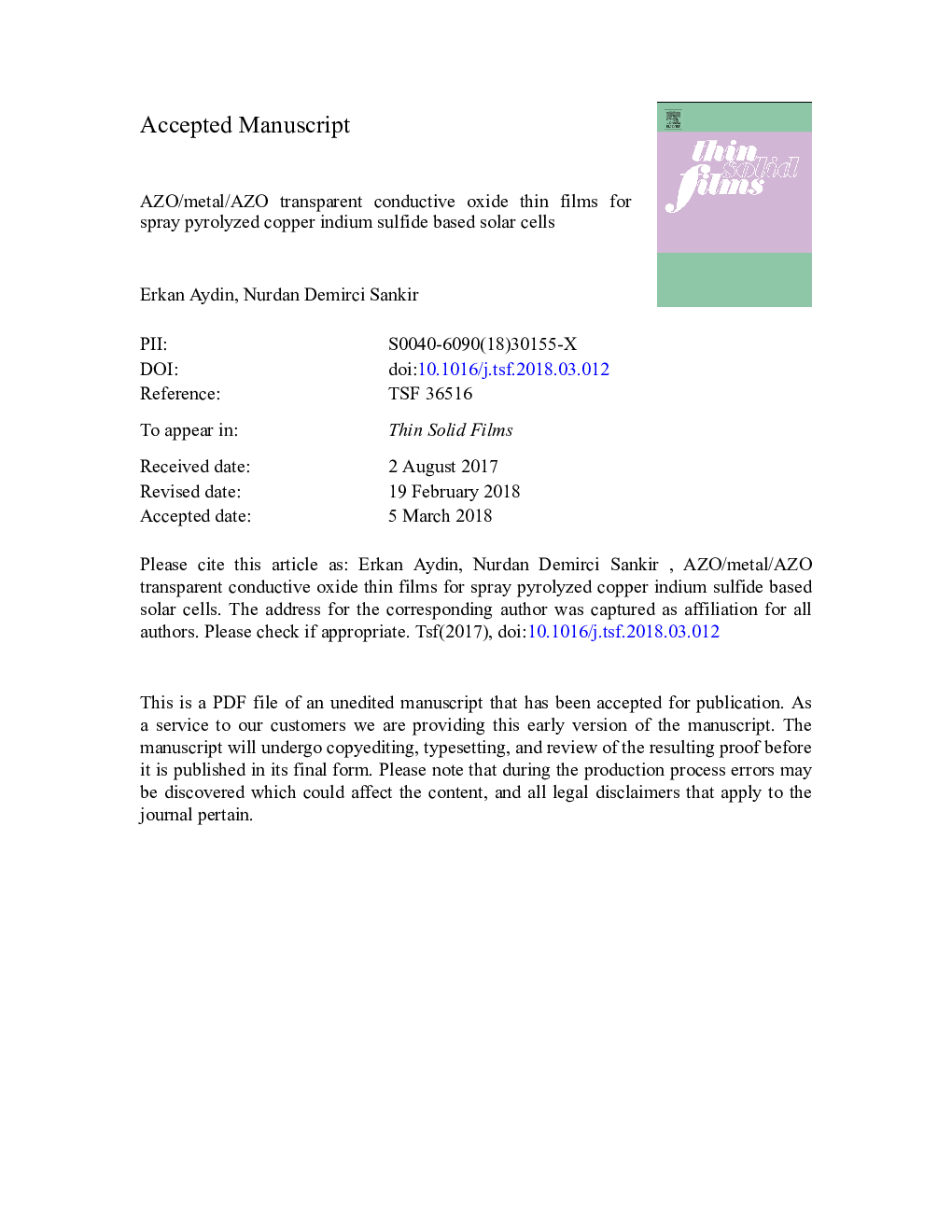| Article ID | Journal | Published Year | Pages | File Type |
|---|---|---|---|---|
| 8032754 | Thin Solid Films | 2018 | 27 Pages |
Abstract
In this study, effects of the aluminum doped zinc oxide (AZO) and metal sandwich structures on the photovoltaic performance of spray pyrolyzed copper indium sulfide (CuInS2) based solar cells have been investigated. Electrical resistivity of the AZO films, 58.5â¯Î©Â·cm, has been lowered up to 3.2â¯Ãâ¯10â5â¯Î©Â·cm via metal interlayer deposition. All sandwich-structured transparent conductive oxide (TCO) layers have been deposited at room temperature and very low radio frequency power. This not only reduced the manufacturing cost but also eliminated the penetration of undesired elements from TCO layer through the absorber. The maximum figure of merit of AZO/molybdenum/AZO, AZO/copper/AZO and AZO/silver/AZO structures were 2.98â¯Ãâ¯10â6, 1.06â¯Ãâ¯10â3 and 3.91â¯Ãâ¯10â2, respectively. This indicated that maximum optical transmittance with minimum sheet resistance has been obtained for the silver interlayer. Then molybdenum/CuInS2/indium sulfide/zinc oxide/AZO-metal-AZO/nickel/aluminum device structure has been manufactured to investigate the photovoltaic parameters. Although all devices had similar open cell voltage, the short circuit current density (Jsc) of the devices has been improved more than 17 times with metal incorporation. The highest Jsc of 10.15â¯mA/cm2 has been observed for the solar cell having AZO/silver/AZO layer. Alternating current measurements revealed that silver interlayer produced the highest electron transit- and life-time, which resulted the higher Jsc compare to the other metal interlayers. Finally, we improved the photovoltaic parameters of the thin film solar cells with AZO/silver/AZO layer via tailoring the stoichiometry of the CuInS2 absorber layer. The maximum conversion efficiency of 4.19% has been observed for sulfur/(copperâ¯+â¯indium) and sulfur/copper ratios of 0.79 and 1.26, respectively. This value is very promising to utilize the AZO/metal/AZO films as TCO layer in low cost and fully ecofriendly thin film solar cells.
Keywords
Related Topics
Physical Sciences and Engineering
Materials Science
Nanotechnology
Authors
Erkan Aydin, Nurdan Demirci Sankir,
